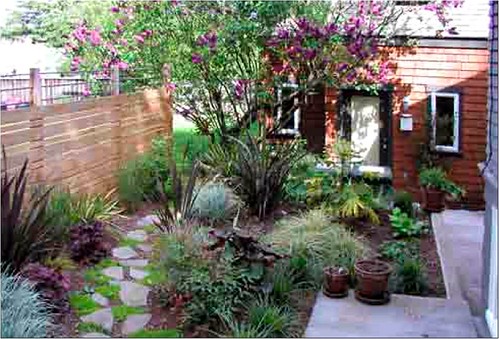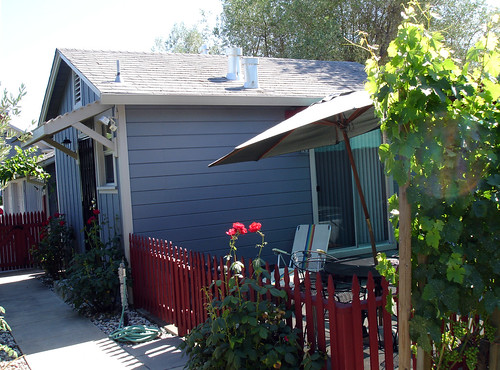Backyard cottages absorb density while maintaining neighborhoods

Posted May 27, 2010 at 1:35PM
We know we need to absorb more people and homes in our existing communities in order to avoid the unacceptable environmental, economic and social costs associated with sprawl. But most of us also want to preserve the things we love about our neighborhoods, including the way they look, feel and function. Seattle has a new ordinance that does both, by allowing backyard cottages – accessory homes that increase a neighborhood’s capacity without changing it much and while frequently also adding an element of affordability.
I’ve written before about how so-called in-law suites, granny flats and other accessory dwellings do this. Now, in Seattle, according to an article written by Judy Keen in USA Today, the city’s new rules permit backyard cottages in single-family neighborhoods across the city, following a successful pilot program.
There are some conditions, specified in an excellent guide published by the city for the pilot, including a minimum lot size of 4,000 square feet. The unit itself is limited to a total of 800 square feet. If the property already contains an accessory unit of some type, the homeowner cannot also build a new backyard cottage. In most cases, there must also be off-street parking available to accompany the new unit. At least one property owner must live in the main house or cottage.
The city’s guide summarizes some of the benefits:
“Because of their small scale, Backyard Cottages can create attractive and affordable rental opportunities for Seattle residents without changing the neighborhood or quality of life for other residents. They can provide greater financial flexibility for homeowners by letting them collect rent for a portion of their existing property or help accommodate larger or multi-generational families. Backyard Cottages also offer a new housing type to Seattle that is desirable, quiet, and compatible with other homes in single-family neighborhoods.
“Backyard Cottages provide a surprising number of benefits to communities, homeowners, and renters. Although much of the attention given to Backyard Cottages revolves around their potential for increasing the supply of affordable housing opportunities, Backyard Cottages may also help to address other social issues, particularly those relating to housing options for the growing elderly population.”
Keen’s article indicates that the ordinance has not been without controversy, as critics of the policy have cited concerns about loss of privacy, loss of trees cut to make room for new units, and fears “that backyard cottages will clutter neighborhoods, clash with existing homes, create parking shortages and attract irresponsible renters.” But former Seattle mayor Greg Nickels told Keen that after the first batch of units was built in the pilot program, a survey indicated that more than half their neighbors didn't even know they were there.
As architect John Stoeck, who is building a backyard cottage, told Keen, "I want to preserve rural areas around Seattle, and I don't want the suburbs continuing to march on without any limits. One way to do that is to add more density to these inner-city neighborhoods." 28 cottages were built under the pilot program and 22 permits have been issued for additional units. The citywide ordinance took effect in December 2009.
Given the success of cottage ordinances in another context in Washington state, Seattle is a great city for this concept to catch on. Other cities that either have crafted rules or are considering crafting rules for encouraging cottages or other accessory units include Denver, Santa Cruz, and Faribault, Minnesota. We have a number of properties in my own DC neighborhood with accessory units, usually lower-level apartments with separate entrances, incorporated into single-family homes. They don’t cause any problems at all, and I think it’s a great idea. (The ever-changing group house of college students with an absentee landlord, however, is another matter.)
Here's a nicely produced video from USA Today about the Seattle program, showing homeowners and cottage residents talking about their backyard cottages:
Move your cursor over the images for credit information.

